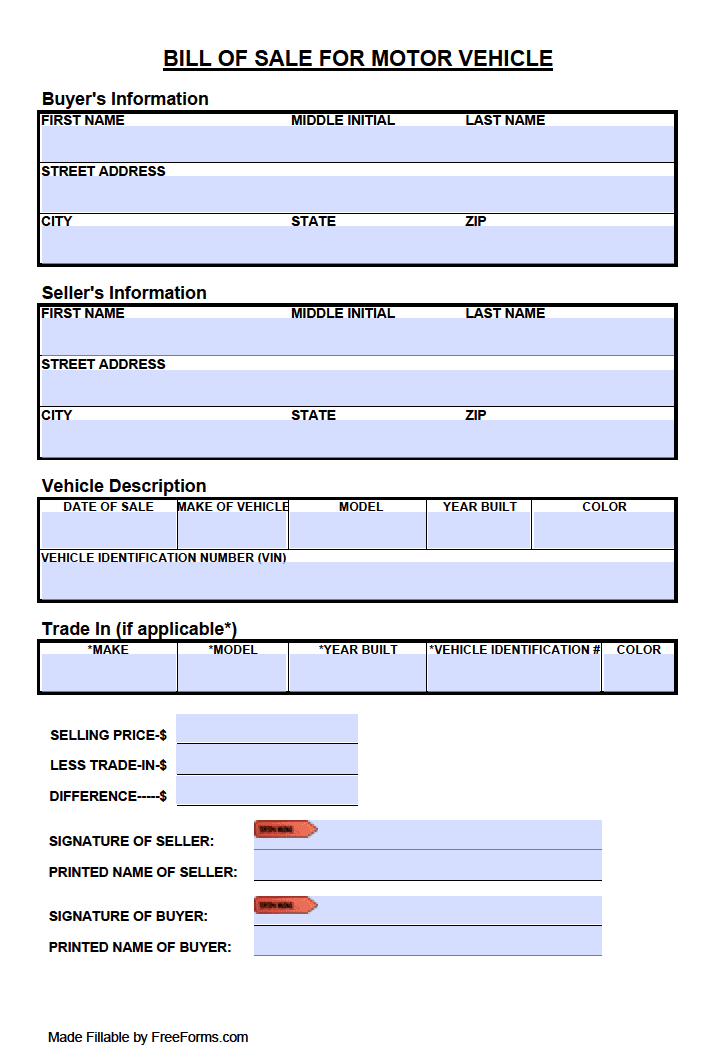The Tennessee DMV bill of sale form is a tangible record to report the essential facts with the transfer of ownership involving a vehicle. This document details information relevant to the sale such as buyer, seller, and vehicle information, along with purchase price, trade-in amounts, and accompanying signatures. The state of Tennessee does not obligate either party to retain a bill of sale upon exchange, but it is recommended for the seller to do so to eliminate any chance for liability exposure. It can also be a beneficial device to make useful for tax purposes.
How to Register a Vehicle
Dependent on the county you reside in, you may have to procure an Emissions Test before transferring the title and registration of the vehicle (TN Code § 55-17-127). Obtaining emissions test certification is required for automobiles that were built in 1975 or after and if the gross weight is 10,500 lbs or under in the following counties:
- Davidson
- Hamilton
- Rutherford
- Sumner
- Williamson
- Wilson
Once you have acquired proof of a passing emissions test, or if you live somewhere other than the counties mentioned above, you will need to visit your local Tennessee County Clerk’s Office with the following paperwork:
- A genuine Certificate of Title, signed-over by the seller.
- Completed Odometer Disclosure Statement for any vehicle that is less than ten years of age at the time of sale.
- A valid form of Identification and Proof of Residency.
- Registration of current vehicle if you wish to retain the license plates for the newly purchased vehicle.
- Filled Tennessee Affidavit of Non-Dealer Transfers of Motor Vehicles and Boats if the vehicle implicated in the exchange is sold to a family member, is a gift, or is sold for a less than average sale price.
- Payment for all combined fees and taxes for titling and registration
How to Write
Step 1 – Download in Adobe PDF.
Step 2 – Buyer’s Information – In the first section, you will want to input the pertinent data affiliated to the buyer:
- Full Name (First, Middle Initial, Last)
- Street Address
- City
- State
- Zip Code
Step 3 – Seller’s Information – Next, fill in the information associated with the Seller of the vehicle:
- Full Name (First, Middle Initial, Last)
- Street Address
- City
- State
- Zip Code
Step 4 – Vehicle Description – Complete the following information about the vehicle being sold:
- Date of Sale
- Make of Vehicle
- Model
- Year Built
- Color
- Vehicle Identification Number
- Selling Price
- Trade-in Information (if applicable) – For transactions involving a trade-in of another vehicle, be sure to subtract its corresponding value from the selling price to determine the difference and annotate accordingly.
Step 5 – Seller and Buyer Signatures – The last section requires the following:
- Signature of Seller
- Printed Name of Seller
- Signature of Buyer
- Printed Name of Buyer



0 comments
Comments are closed.